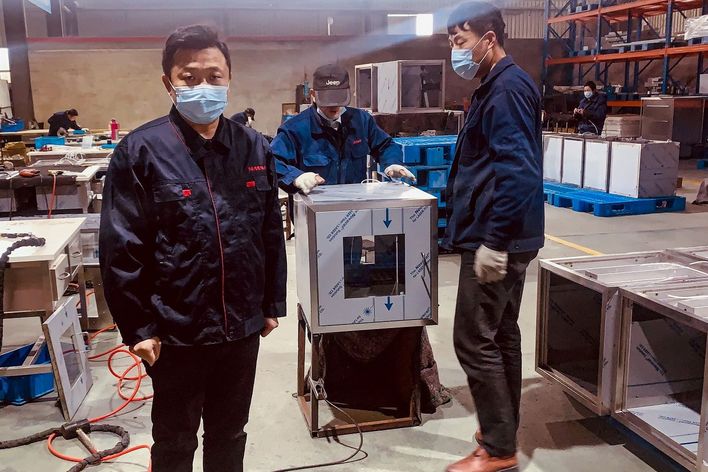Mr Duffke, how important was TRUMPF's decision to build its own laser in the 80's?
Berthold Leibinger, the then CEO of TRUMPF, saw a lot of weaknesses in the lasers on the market at that time. We had one problem after another with the beam guidance and cutting quality. But even at that time, high processing precision was crucial, because we wanted to follow up on the good reputation that our punching machines and nibblers enjoyed. Berthold Leibinger's idea of us building our own laser was the only way we saw to succeed with this technology in industry.
Did you have hesitations when you heard about these plans?
No. As a TRUMPF service engineer, I had already gained experience with lasers from other manufacturers in the late 70's. I had an idea of what as possible with the laser. It cut geometries that punching machines couldn't. What's more, I had confidence in TRUMPF's inventive talent.
What were the development challenges?
There were barely any physicists in our team. Most of us just had a technical background. For us, a lot of the laser development was unknown territory. We were really motivated, though, and got some training from Hüttinger, a company that now belongs to the TRUMPF Group. This is how we gained the physics knowledge and the technical radio frequency know-how which we needed to tackle the challenges of the laser.
Do you like reminiscing about those days?
Absolutely! We used to do our research at TRUMPF in Gerlingen, in a small industrial zone beside a few Swabian farm fields. There we were off the beaten track. We were like a group of mountain climbers. We worked together until we finally got to the top. I really appreciated the team spirit we had. We all knew that we were pioneering something completely new. If one colleague lacked some necessary technical knowledge, the others helped him out.
In 1985 we ignited the laser for the very first time. What memories do you have of that day?
The team was really excited. When the laser successfully ignited, the champagne corks popped and there was a sudden round of hugs. It couldn't be compared to the first hole punched in a sheet by a new TRUMPF punching machine. That was a field we were all familiar with. The laser was something completely new for TRUMPF. Berthold Leibinger came by to personally congratulate us.
The media often spoke of the laser ignition at TRUMPF as laser technology's "quantum leap". Were you at that time already aware of the success of the technology?
No, nobody really expected it in those days. We were only convinced that we could cut more complex geometries with laser technology, and that we could use it to lower tool costs. At that time, the laser was a tool looking for an application. Now the opposite is true - there is barely a branch that could manage without the laser.
How did customers react to TRUMPF's first very own laser?
When we presented TRUMPF machines with lasers from other companies, a lot of customers were hesitant. They found the tool innovative, but wanted initially to watch it and see how it developed in the market. We only gained their confidence once we had developed everything from one source - the machine, control, laser and beam guidance system.
In your opinion, what were the milestones in the TRUMPF laser development?
One important step was the establishing of the Laser Application Center in 1987. To be successful with lasers, we have to master not only the development and production of lasers, but also their application. We accomplished that with the LAC - here we researched technologies for laser joining, cutting and engraving. TRUMPF is so successful in laser technology because the company pushed the development with great consistency, and even when things got tough it never lost its focus.
Is TRUMPF poised well for the laser's next 60 years?
Yes, I'm convinced it is. TRUMPF is a courageous company with a lot of staying power. The fact that it is a family business is also a plus. The EUV technology is a good example of this. Were TRUMPF a publicly owned company, it would never have been able to hang on as long as it did. The family pushed the development forwards with a lot of patience. And that paid off. Today we are the most successful manufacturer in the EUV laser field. What's more, the management has a profound technical understanding and brings with it a great passion for innovation. Most of all, a lot of superb people work here, and they research with a great deal of commitment and creativity.

Gerd Duffke started his training as a mechanic at TRUMPF in Hettingen in 1972. In 1998, as a member of the Works Council, he supported the establishment of the Laser Center, a laser production facility, at the Ditzingen site. In 2010, Duffke changed to the Personnel Development Department where he continued to advance research projects. He is currently working in the VASE project to use virtual reality in training offers.





